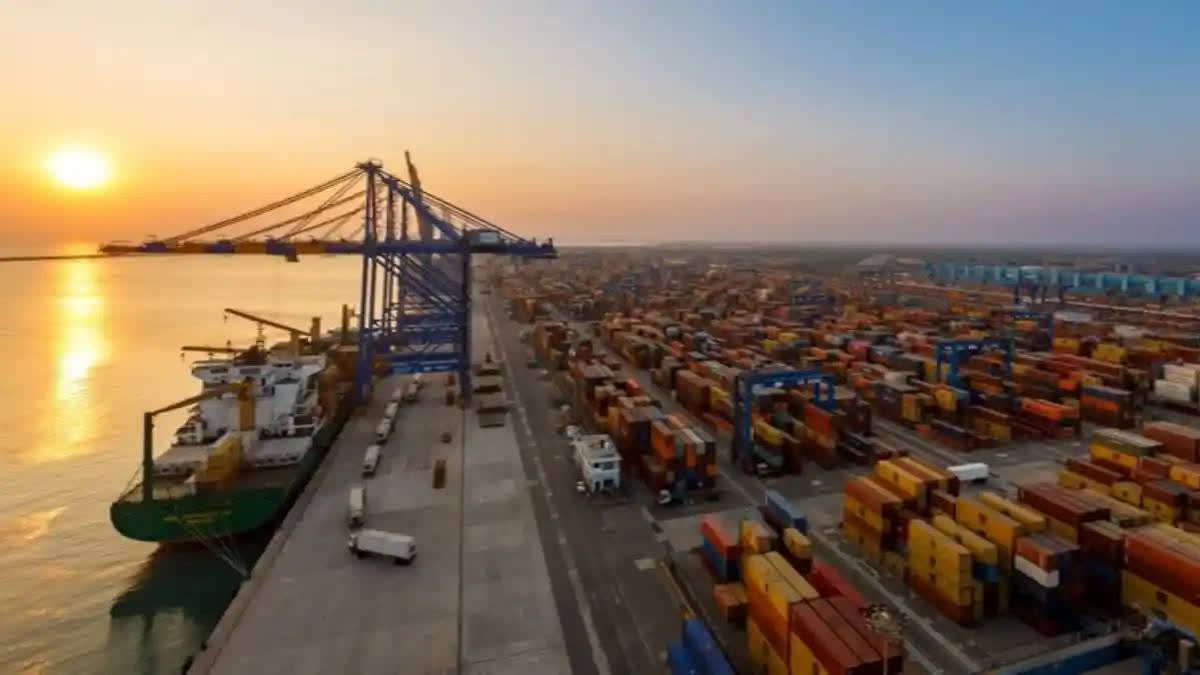Kolkata: Indian exporters and importers can heave a sigh of relief as the container and freight rates have started to decline as the demand is fading post-Chinese New Year even though the average prices for 40 ft cargo-worthy containers remained robust in Nhava Sheva and Chennai where customers are facing container scarcity and tightening capacity due to the impact of the Red Sea crisis. However, the container-supplying industry anticipates a 6-8% reduction in these prices in March and April.
February 2024 marked a pivotal moment in the trajectory of container leasing and trading rates, which had risen for the past three months (starting November 2023), coinciding with the onset of the Red Sea crisis. This inflection point is closely aligned with the forecast of Container xChange, a leading online platform for container logistics that brings together all relevant companies to book and manage shipping containers as well as to settle all related invoices and payments. Container xChange had anticipated a reduction in demand and subsequently, a reduction in average container prices and leasing rates post-Chinese New Year.
“In the shipping industry, March is a transitional period following the Chinese New Year (CNY). Historically, CNY has led to a slowdown in manufacturing and shipping activity in China, which can cause a temporary decrease in demand for shipping services. However, as businesses resume operations after the holiday, there can be a surge in demand for shipping, particularly for goods that need to be restocked after the holiday period,” explained Christian Roeloffs, Co-founder and CEO of Container xChange.
“Additionally, March is often considered the beginning of the contract season for many shipping companies. This is when annual shipping contracts are negotiated and finalised for the upcoming year, which can influence shipping rates and capacity utilisation in the industry. While March can be a period of increased demand compared to the immediate post-CNY period, it is not considered as robust as other peak seasons like the pre-holiday period leading up to Christmas,” Roeloffs said.
“Further into the year, rising inflation rates globally could potentially lead to higher production costs and increased consumer prices, thereby affecting trade volumes and container demand. As businesses grapple with inflationary pressures, they may need to reassess pricing strategies,” added Roeloffs.
On November 19, Iran-backed Houthi forces began attacking shipping vessels affiliated with Israel passing through the Red Sea. After 102 days, the shipping industry has emerged from this crisis better prepared than many had predicted. As the industry typically responds to such crises, the initial impact was felt on rates.
Freight rates immediately and persistently jumped as the world entered the last month of 2023. This timing also coincided with the pre-Lunar New Year rush, which builds up in January and culminates in February. Consequently, the freight rate boom continued well into 2024 as shippers aimed to deliver cargo for the cyclical demand, known as the pre-Chinese New Year rush.
Following the conclusion of the Chinese New Year on February 24, 2024, signs of fading demand and falling freight and container rates began to appear. A continued decline in rates is expected, although not crashing. Freight rates typically fall by 30% every year from February to March and into April. Similarly, container rates are expected to fall by a measure of 18-6% depending on locations, with a higher percentage of decline expected in Asia.
In February 2024, container prices rose by 10% in Northeast Asia, 7% in Oceania and 2.5% in Southeast Asia, remaining stable in North America. However, prices declined in Europe (5-7%), Japan and Korea (5%) and the Middle East and ISC region (2.4%). A significant development is that the rates did not decline drastically in the last week of February compared to previous years. This can be attributed to the volatility caused by the Red Sea diversions and capacity being tied up in the market.
While the cyclical forecasts indicate otherwise, Container xChange’s price sentiment index (xCPSI) indicates that the supply chain professionals remain positive about the container price hikes further into March owing to the persistent Red Sea situation and its implications on supply chains. While the xCPSI was in the negative territory throughout Q1’23, indicating a market sentiment where the majority expected prices to continue slashing off the floor, the sentiment index reached an all-time high this February 24 owing to the Red Sea crisis.
Read more: Explained: Impact Of Houthi's Attack On Merchant Navy Vessels In Red Sea



